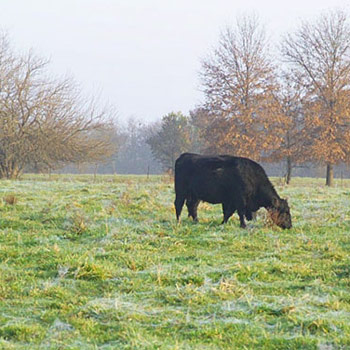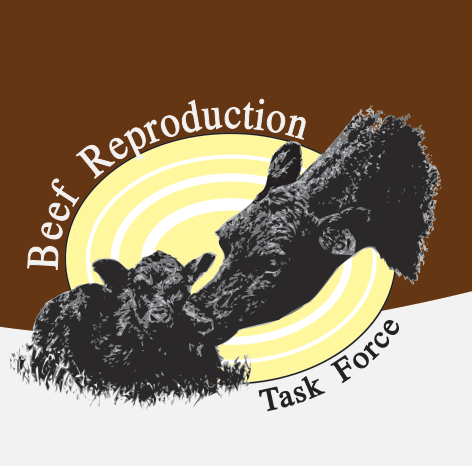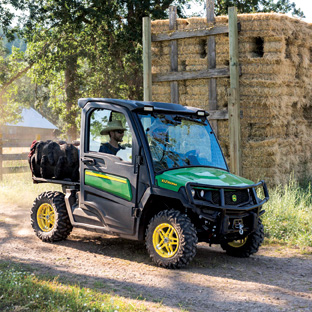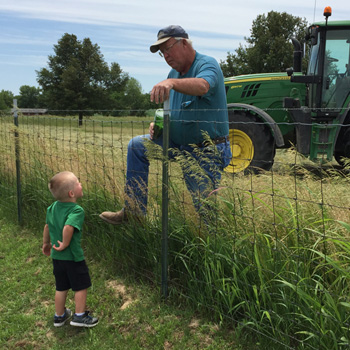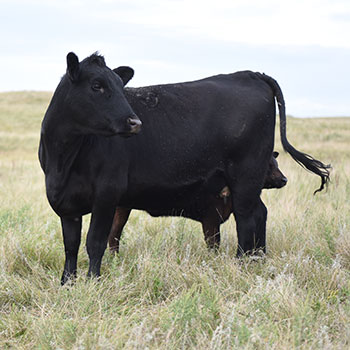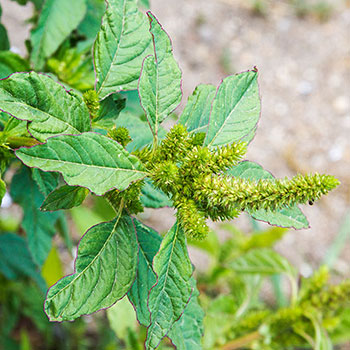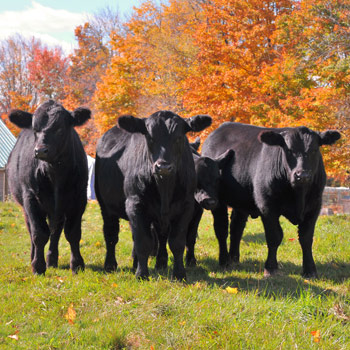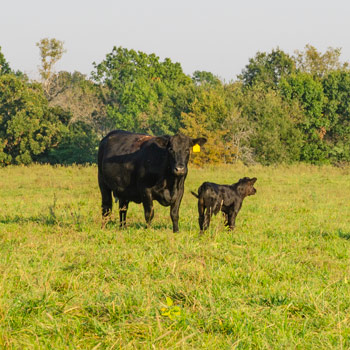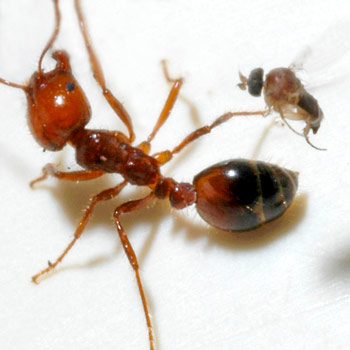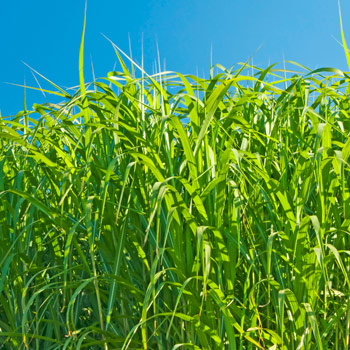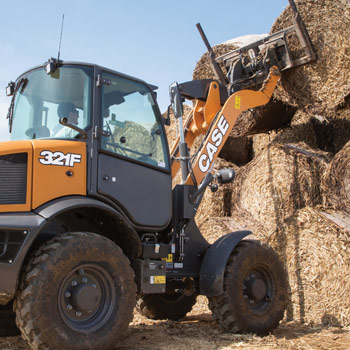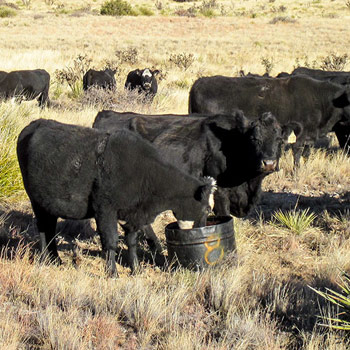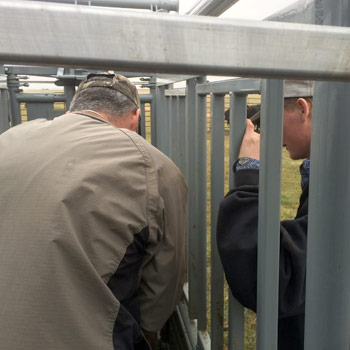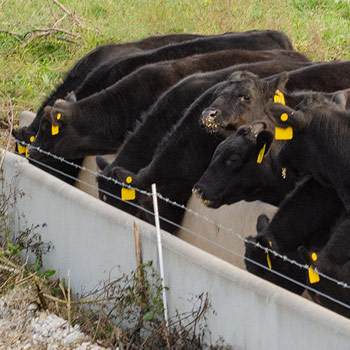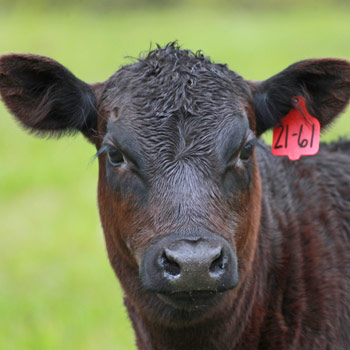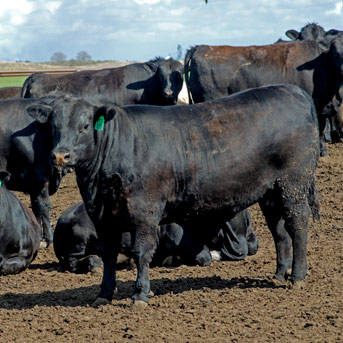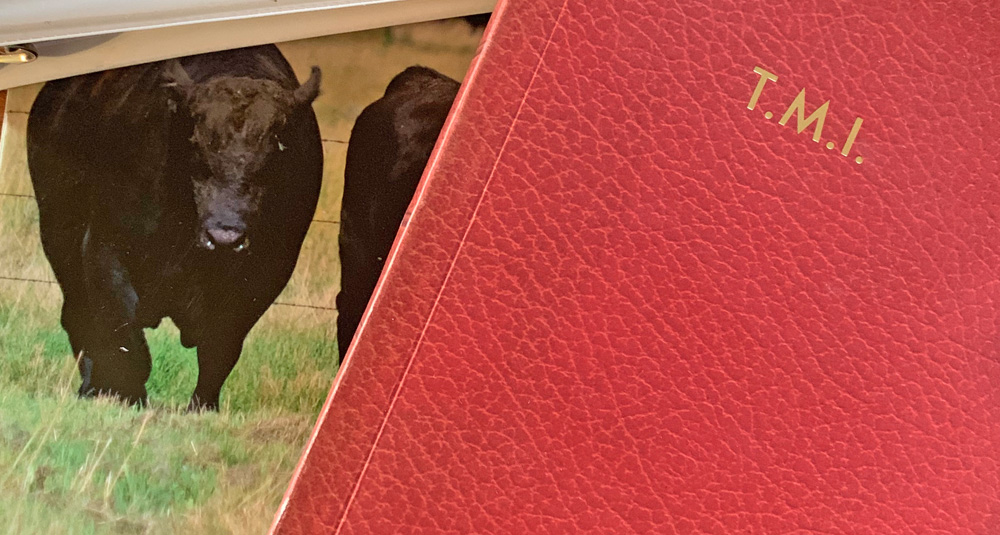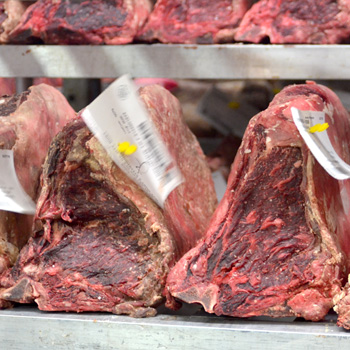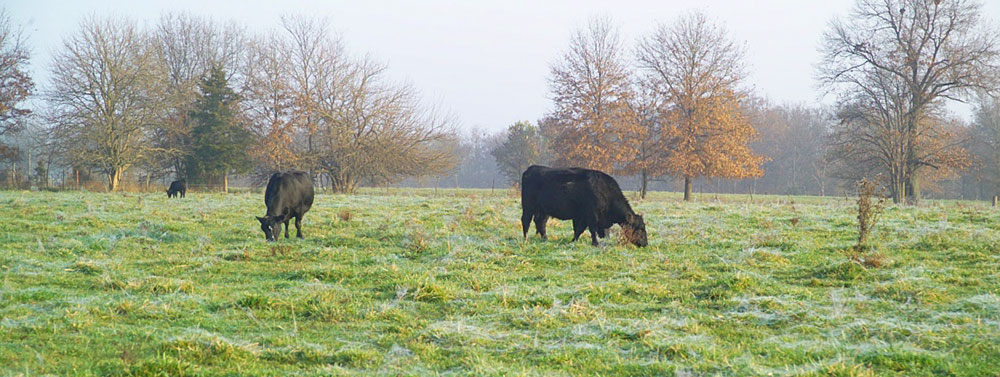
Feed for Thought
Forage experts offer four key strategies to forage management.
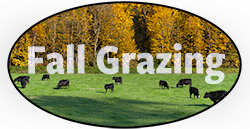
The pairing of cattle and forage is a tale as old as time. This tale works well for the cattle, the forages and the cattleman’s bottom line when managed properly.
“Each day that grazing is extended, the cow-calf sector saves nearly $4 million,” says Peter Ballerstedt, a forage ambassador with Barenbrug.
“A ruminant takes fibrous forage crops and roughage and turns them into high-quality protein. My earliest reference to cattle was in the Bible, Genesis 1:26. The ruminant is one of God’s amazing creations,” says Garry Lacefield, professor emeritus in the Department of Plant and Soil Sciences at the University of Kentucky and consultant with the Oregon Forage Seed Commission.
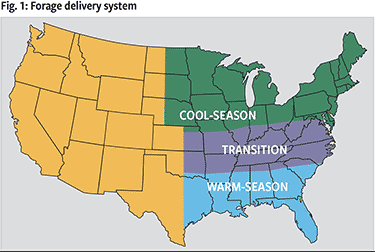 |
To see a larger version of Fig. 1, please click here. |
Like ruminants, forage management is not a new concept. Use of products like fertilizer and pesticides has been around since before Christ. Major advances during the 20th century of herbicides, fertilizer, equipment, fencing, watering systems, improved genetics and dedicated farmers results in more production per acre and per animal than ever before.
“Advances in fencing and watering systems permit us to have, in my opinion, the most efficient grazing system that we’ve ever had in this country,” Lacefield says. “It permits us to utilize more of what we produce, utilize it in a higher-quality state and utilize it over more days of the year. All of those can help us make money.”
Grazing is the cheapest source of nutrients, but it has its challenges. How can cattlemen get more value out of their pasture?
To improve grazing management, you need a plan.
Know your needs
The key to forage profitability is knowing your forage options and animal nutritional needs, says Don Ball, professor emeritus in agronomy and soils with Auburn University and consultant with the Oregon Forage Seed Commission. Know when your animals’ requirements are highest, and the quality of your forage crop options to know if you’ll need to supplement.
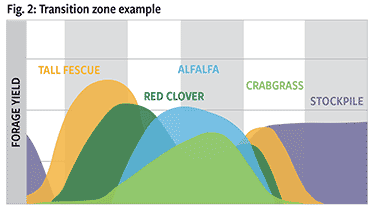 |
To see a larger version of Fig. 2, please click here. |
Getting good stand establishment is crucial to proper grazing management. Forages are particularly vulnerable during establishment. There are many factors that lead to establishment success, including seeding method, planting date, seeding depth and seeding rate, Ball says.
“Good variety decisions don’t guarantee success, but bad ones can guarantee failure,” he urges. “Cheap seed is rarely a bargain.”
Ball recommends testing your soil to determine nutrient needs.
“Soil testing is boring, but it’s important,” he says. “That testing can be worth several hundred dollars per hour.”
Also be aware of nutrient flows and nutrient sinks, he advises, because about 80% of nutrients consumed are excreted. If cattle congregate in one area too often, those nutrients are likely to stay in one place. Cattlemen can greatly improve the nutrient flow by managing grazing.
Stockpiling
Managing the location of your animals by permanent or temporary fencing plays a large role in extending grazing.
“Stockpiling is the first step to improving grazing management,” Ballerstedt says.
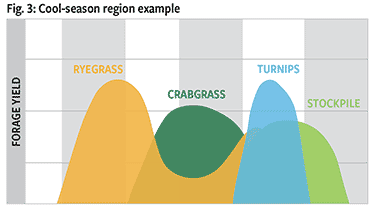 |
To see a larger version of Fig. 3, please click here. |
Simply put, stockpiling uses late-summer and early-fall growing conditions to obtain high-quality pasture for fall and early winter grazing. Proper management of stockpiled forages can extend grazing days by about one-third, Lacefield says.
Ballerstedt shares University of Arkansas data that show strip-grazing doubles grazing days on stockpiled forage and saves an extra $10 per animal unit vs. continuous grazing. The electric fence construction in that study saved nine producers $14,875 vs. traditional fencing.
Don’t skimp on seed or preparing for planting, because you will pay for it when you have to feed hay, he warns.
More information on stockpiling research can be found at https://bit.ly/2E3cZMP.
Legumes
Ball recommends using legumes whenever feasible, calling them forage superstars. He shares a summary of research comparing 37 pasture systems, of which 15 used legumes. Eight of the lowest 10 pasture costs per pound of gain involved legumes.
Legumes often give a higher forage yield, compared to grass receiving little nitrogen (N) fertilizer. They typically produce better-quality forage and offer longer grazing potential with less need of fertilizer, Ball adds. They increase animal gains and conception. They lower toxicity potential, especially with regard to endophyte-infested tall fescue.
Both Ballerstedt and Lacefield agree that legumes are an imperative aspect of forage management, reducing the need for costly nitrogen fertilization.
Fill in gaps
No matter the base forage, it will not grow uniformly throughout the year. By narrowing a calving window, the needs of animals can be condensed into windows of high forage availability.
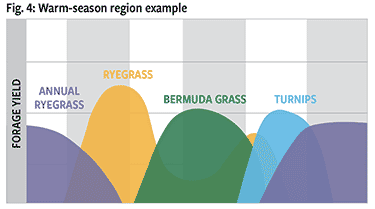 |
To see a larger version of Fig. 4, please click here. |
Because of these deviating growth patterns, pay attention to forage quality and quantity, Ball notes. Pastures are solar collectors, so if a pasture is overgrazed, less photosynthesis occurs. This translates to less food for the plants, and thus less food for the cattle.
“Poor quality brings double woe; intake declines because digestion is slow,” Ball recites.
Grazing management helps reduce the need for stored feed when quality is lowest or simply unavailable. Plus, cattlemen also have to deal with feed losses due to storage and feeding. They often don’t realize just how much they’re losing.
“If you consider the losses incurred, some folks, in essence, pay for a hay barn they never build,” Ball says.
Instead of feeding hay, Ballerstedt offers that in many parts of the country, it’s possible to fill in gaps of pasture with alternate-season annuals or cover crops (see figures). He suggests using forage such as teff grass and crabgrass to fill in summer gaps, and using turnips, brassicas and rape for late fall and early winter grazing.
Despite the fact that his company offers many forage options that complement each other in their Pinpoint system, the grazing plan is the most important.
“If I was just to suggest a new forage variety without addressing your grazing management, then I’ve not helped at all,” he admits.
Despite the forage varieties, the management of said varieties will increase a cattleman’s bottom line.
That’s another tale as old as time.
Editor’s note: The figures are examples adapted from Barenbrug USA.
